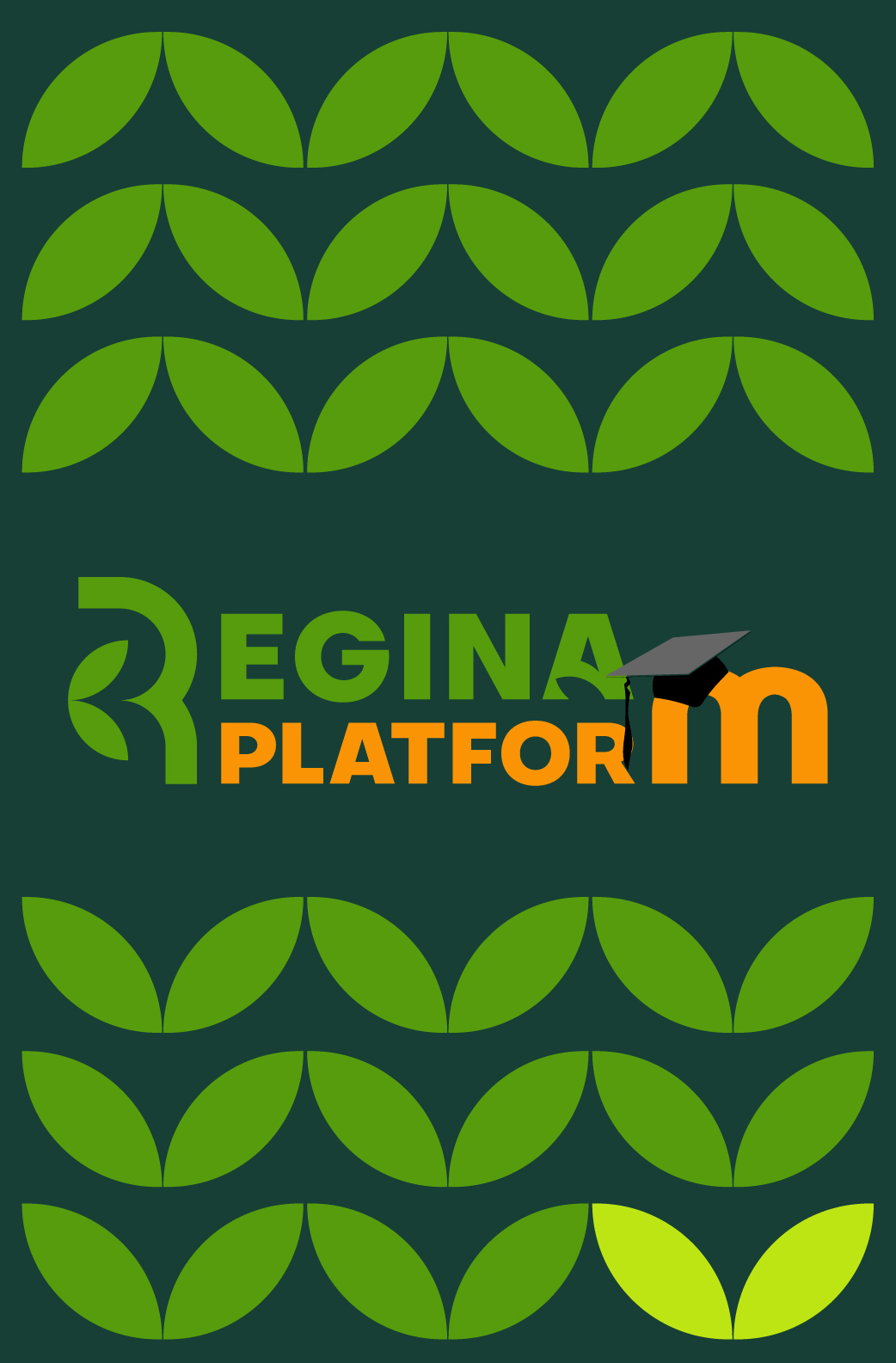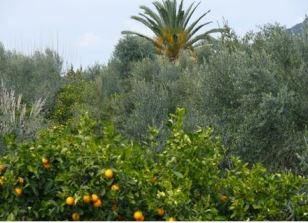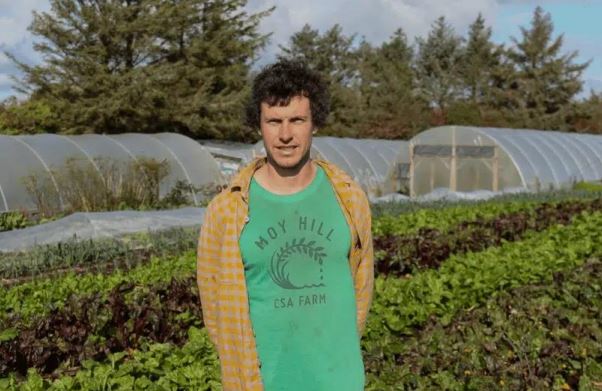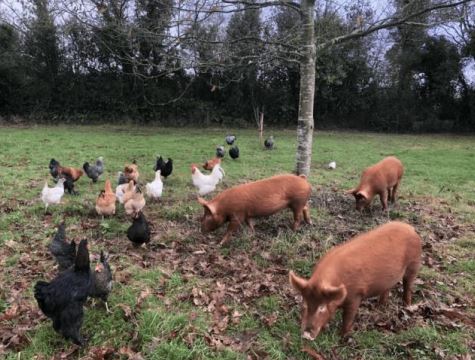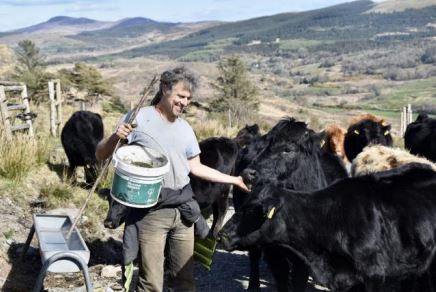Categories
Agroforestry
The Southern Lights Pilot Farm
Success Story
Since 1985, the farm has been implementing advanced organic farming, applying practices such as green fertilisation, fragmentation of branches and introduction into the soil, and increasing biodiversity. The next generation of the family-owned farm decided to go a step further, when they noticed that in their farm the forest started to grow while in the surrounding mountains the forest did not return 11 years after the wildfires that had destroyed it. Sheila, the daughter of the original farmer who had decided to apply advanced organic farming since 1985, together with other family members, started researching into the concept of regenerative agriculture and the agroforestry principles and methods, receiving training abroad, and started to implement RA methods on the farm systematically 7 years ago. Today she is sharing the benefits of the transition to RA, ranging from working on a farm with increased biodiversity and the therapeutic effects this has, the financial security that comes from an increased farm resilience, and the new commercial opportunities available in other sectors (e.g. tourism), to the personal satisfaction for contributing to the fight against climate change and the sense of belonging to a wider network of like-minded persons. Southern Lights participates as a partner in an important project to promote Regenerative Agriculture in Greece. The project was launched in 2021 in order to bring Regenerative Agriculture to Greece and has created 6 pilot farms in different areas of Greece and with different crops, while offering through its website www.regenerativefarminggreece.org important information and educational material for Regenerative Agriculture.
Labels: Greece, organic, vegetables/fruits, agroforestry, biodiversity
Moy Hill Farm
Success Story
Introduction to Moy Hill Farm
Fergal and Sally run an 80-acre mixed regenerative farm on the west coast of Ireland. Fergal grew up on an organic market garden farm in Mayo where he learned about the importance of soil health and farming with nature. After a few years of travelling and surfing around the world, Fergal returned and started his own farm near the surfing town of Lahinch in County Clare, where he now lives with his young family.
Moy Hill Farm contains a mixture of livestock – cows, sheep and hens, and grows about 25 different crops in their “No Dig” Market Garden. They sell a variety of fresh produce at markets and to local restaurants.
Regenerative Agriculture Training
Fergal and Sally began farming regeneratively in 2017 after learning about the methods in a Holistic Management course provided by the Savory Institute, an agricultural research organisation with hubs across the world. Here, they learned how to sustainably manage livestock and how to plan the year ahead to ensure fresh pasture year-round, reducing feed and fertiliser costs. Since then, Fergal has engaged in many trainings, such as a regenerative farming course run by expert Richard Perkins and the Irish National Organic Training Skillnet. He said it is inspiring to learn about farmers from around the world engaging in regenerative agriculture through these trainings and events.
Using Livestock to Regenerate the Land
Fergal described how animals are key for regenerating large areas of land. He views his way of farming as managing ecosystems, protecting and enhancing habitats, and focusing on diversity. Fergal manages his animals so that they benefit, not harm, the environment around them.
Livestock are put into small paddocks and moved daily onto fresh pasture. This rotation cycle, called “mob grazing”, allows for areas of grassland to rest and recover in the periods where they are stockless. Plants are left to “fully express themselves, which allows for the other habitants of the farm, such as insects and birds, to thrive as a result. Fergal believes that he can regenerate hundreds of acres of land with the help of livestock (cows, sheep, poultry) and regenerative management practices.
Regenerative Verification
Every year, Moy Hill farm get an EOV “Ecological Outcome Verification” assessment on their land which verifies that their soils are getting healthier. The EOV surveyors monitor every field on the farm to ensure all environmental indexes are going up. Fergal described how this EOV verification is a simple way of holding regenerative farmers accountable, as it will prove whether they are regenerating their land and making a positive impact.
No Dig Market Garden
Fergal and Sally follow the regenerative practise of minimum disturbance of the soil. Their market garden is not tilled or dug, in an effort to protect the soil’s structure and biodiversity. Up to 25 different crops are grown on their market garden such as salads, kale, beetroot, beans, tomatoes, squash, courgettes, peas, turnips, leeks, onions, and garlic. Their salads are the best seller as local restaurants and shops are in constant demand for fresh, local lettuce.
An Ode to the Past
Fergal described how the way he farms now, is very similar to how traditional farms in Ireland were managed many years ago. Most farms used to have a vegetable garden, poultry, and it was common to have a mixture of livestock, whilst sewing native trees and orchards. Regenerative Agriculture is therefore, as Fergal described, not a “new” concept. It is all about farming in a way that makes sense for the local environment and for the farmers themselves. Fergal and his family benefit from fresh produce and an outdoor lifestyle that is in tune with nature. He describes farming this way as a “labour of love” and “being part of a bigger picture”, whilst also creating a healthy life for himself and his young family. The work of regenerative agriculture never stops, but this makes for an exciting challenge for Fergal.
An Affirming Experience – Farming with Intention
Fergal and Sally believe in “farming with intention”, and that diversity across their farm is key to its health and long-term success. While they are not receiving any financial support to farm regeneratively, indeed the training and EOV certification is costing them money, they are able to grow high quality food and thus market their products at a higher price. Fergal noted how he has been experiencing the ecosystem on his land ‘thrive’ since implementing RA practices, and he spoke about how this is an affirming experience for himself and his family.
LABELS: Ireland, Livestock, Organic, Vegetables/fruits, Green Fertilisation, agroforestry, biodiversity
John Mchugh
Success Story
John McHugh is a nature-friendly, registered organic farmer from Co. Laois, who inherited a 95-hectare farm from his parents in 2001. He has a modest herd of 60 dairy cows, along with a small beef herd, hens and pigs, whom he frequently integrates together as seen in the image below.
The Beginning of John’s Regenerative Journey
In 2014, John needed a change. He wanted to be free from debt and for his farming to become more resilient; both economically and environmentally. He no longer wanted to “blindly follow advice”, and he was motivated to discover less intensive farming methods. So, he began the gradual process of reducing his herd size and has gone from a herd of 160 in 2014 to 60 in 2023.
John believes that there is not much space for nature in the conventional system due to the stringent rules and high costs. So, regenerative agriculture was an exciting opportunity for John to make a real change, on his own terms. John believes that dairy farmers can be too heavily focused on trying to have as many cows as possible, while maximizing output. He explained how this can be a vicious cycle of higher costs and inputs, as he came to realise from his many years of conventional farming.
100% Forage Based Feed
Now, after farming more regeneratively for almost 9 years, John’s land has grown incredibly resilient. For example, John has not been feeding any grain feed to his cows and other cattle on the farm since 2020, all animals are 100% forage fed (predominantly grass). His pastureland is plentiful, and he makes his own silage and hay for indoor feeding. John explained how his animals’ forage-based diet allows for the end products (meat and milk) to be richer in omega 3 fatty acids. Creating his own feed allows for a healthier, more cost-friendly, and generally more sustainable product as it is all produced on-farm through organic growing methods.
Keeping the Cattle Out Year-Round
Unlike most other Irish dairy farms who bring their cattle in for the winter, John can keep his cattle out year-round as his herd is small and his pasture is abundant and resilient to the Winter weather conditions. He puts this resilience down to his regenerative farming methods; with stronger soils and healthier plant growth. Of course, he mentions, if the weather becomes harsh then he will bring the cattle indoors, and indeed, his winter milking cows are kept indoors for ease.
Becoming Friends with Shrubs and Trees
John is engaging in the process of semi-rewilding areas of his land through engaging with Agroforestry and growing Scrubland. He keeps the cattle out of these areas until the land has matured enough for them to forage, as seen in the image below. Allowing his dairy cows to feed outside of grassland pasture is unique in the Irish dairy farming landscape.
John believes Regenerative Agriculture is “highly contextual”, and that farmers must find the practices that work for them, and their land. John holistically grazes his cattle on mature, diverse grassland. Paddocks are not over-grazed, and are given time to rest and regrow after grazing.
Welcoming in the Community
John has allocated a section of his farm for the community to keep small allotments and grow their own produce. This community farm is planted with a mixture of native trees and vegetables in the hopes of forming a Forest Garden with plentiful fruit and nut trees. For John, the community farm is not about profit, it’s about social exchange and people working together.
Biodiverse Pastureland
John has multispecies swards of a variety of native grasses and herbs that lead to his fields looking like colourful meadows in the Spring and Summer. He allows his grass to go to seed, which has exploded the biodiversity and greatly increased the number of pollinators.
Saying No to Chemical fertilizers
John believes that you can’t claim to be regenerative if you are using nitrogen or phosphorus fertilisers, as they undermine the carbon and natural diversity of our swards. Indeed, these fertilisers have been known to reduce soil biodiversity whilst leading to high levels of run-off and subsequent water pollution in Ireland. John noticed how when other farmers were struggling with drought and wet weather conditions nearby, his grass was continuously growing strong, and he believes this is due to improved water retention in his soil that has been enabled through his years of regenerative practices.
Quality Produce, Improved Animal & Financial Health & Continuous Improvement
John sells his dairy to a local organic yoghurt producer called Glenisk. While organic premiums were hit hard this year, he hopes to receive a higher price for his goods in the coming years. Through regenerative farming, John has found financial resilience, a reduced workload, huge improvement in his animals’ health, and more time to spend with his young family. John says that regenerative agriculture is a constant process, with continual tweaking and reassessments of practices necessary.
LABELS: Ireland, Livestock, Organic, Dairy, Green Fertilisation, Agroforestry, Biodiversity
Derry Duff Farm
Success Story
Derry Duff is a 54-hectare farm, established in 2008 and located by the wild Atlantic Ocean. Steve and Claire integrated regenerative practices into their farm from the start and attained organic status in 2010 due to the mandatory 2-year conversion period. Regenerative Agriculture is similar to Organic Farming in many ways, as it uses no chemical inputs such as synthetic fertilizers, pesticides or herbicides. Regenerative Farming is a term for a range of sustainable farming practices that farmers can implement on their land, with a large focus on improving the health of the soil, biodiversity, nutrient cycling, water quality and reducing greenhouse gas emissions.
Derry Duff is unlike other Irish farms, as their main crops are organic Blueberries and Aronia Berries, both grown for their nutritional properties. Once harvested, the berries are made into health food products and drinks. The rugged mountainous landscape of the Derry Duff West Cork farm is unique, filled with native species such as heather, birch and alder. Steve and one other worker permanently farm, with temporary volunteers coming to stay and help for a few months at a time.
Derry Duff farm is certified with the Irish Organic Association and they abide by a range of sustainable farming practices. Instead of using chemical nitrogen fertilizer, clover and herbs have been mixed into grass swards to fixate nitrogen naturally. They use no pesticides or herbicides so weeding is done manually. Native trees and shrubs have been planted around the edges of several small ponds, to act as an absorption layer between the paddocks and the water, reducing the risk of pollution to the water.
Derry Duff is home to many animals, with a small herd of 18 organic dexter cattle who roam the wild mountainous landscape alongside the chickens. Derry Duff excellently integrates animals with the land, ensuring that their animals benefit, rather than harm, the environment. The farm also has a Tree Nursery and Steve and Claire are experimenting with Agroforestry; whereby native trees are planted within grazing land to provide nutrients for the soil and shelter for the animals.
An apple orchard of 80 trees is inhabited by free range chickens, who roam around the young apple trees. This integration of animals with trees is a feature of Regenerative Agriculture. For example, the chicken scratches around the radius of the trees, keeping the area clear from weeds, as well as providing precious natural fertilizer!
Steve and Claire’s goal since starting their farm was to make it more beautiful, and to do so in a way that was in harmony with the hills and natural landscape. Steve’s knowledge of regenerative agriculture was entirely self-taught and refined through trial-and-error. Steve believes that much of regenerative farming is “common sense”, and he enjoyed this trial-and-error that came with implementing regenerative practices, coming from a scientific background himself.
Steve has seen a variety of benefits from Regenerative Agriculture, such as:
- Economic benefits: they can market their products as higher quality than standard.
- Land management: the cattle aid in the management of the tricky hilly landscape.
- Improved soil: the Aronia plant has deep roots that penetrate the clay subsoil which promotes nutrient cycling and regenerates the soil.
- Increased Biodiversity: due to diverse habitats, wildlife corridors, and no destructive farming practices on the farm.
There were a few downsides for Steve, such as the manual work from weeding by hand and a lack of funding for Regenerative Agriculture practices. Overall, Regenerative Agriculture is working excellently for Steve and Claire’s farm, and they intend to explore further regenerative practices into the future.
LABELS: Ireland, Livestock, Fruits, Organic, Green Fertilisation, Biodiversity, Agroforestry
